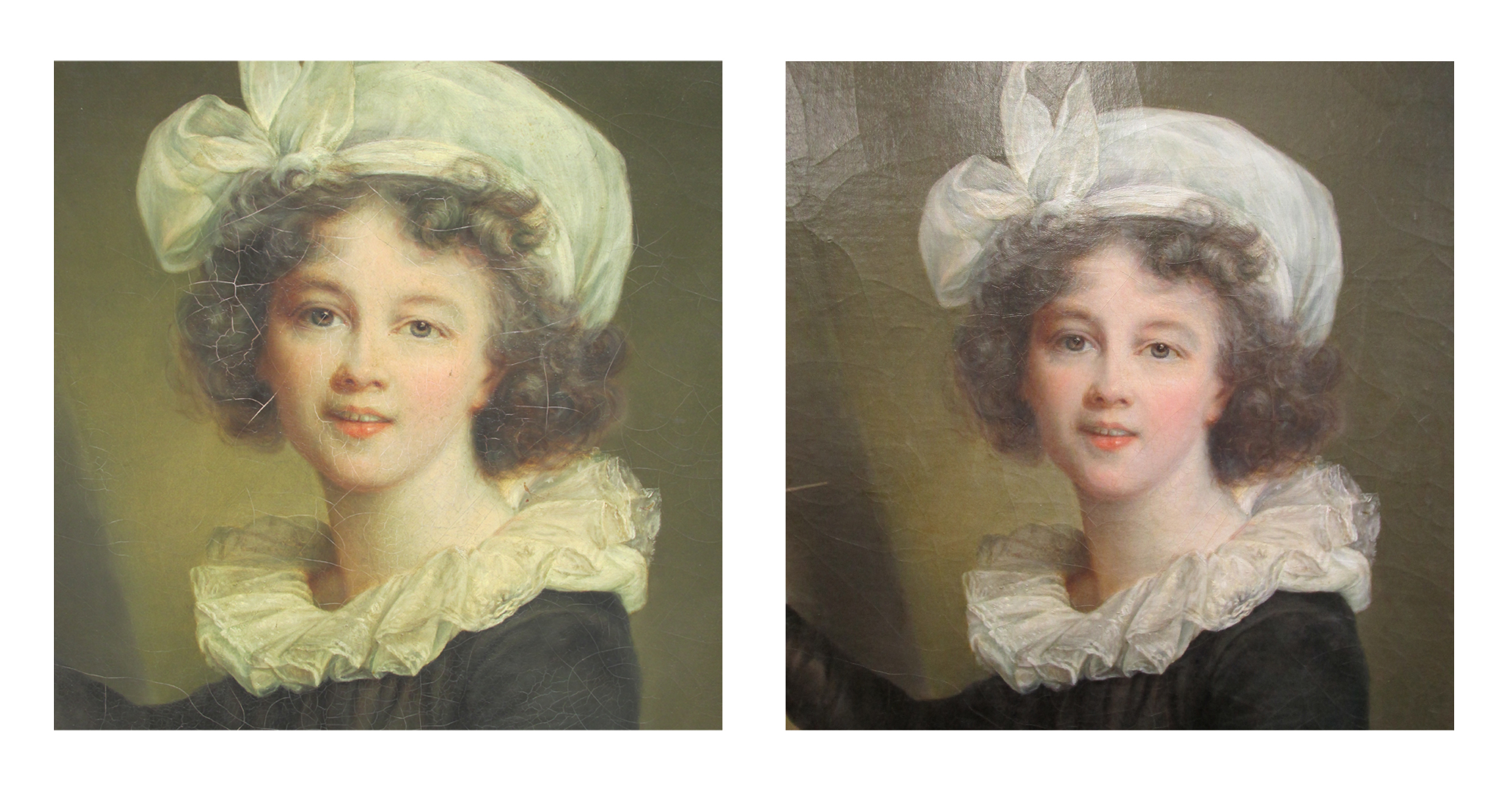 Eustis Estate
Eustis Estate
Adams conservation

Historic New England objects conservator Michaela Neiro supervised the conservation treatment and stabilization of this exhibition’s paintings and frames over a period of two years. The Conservator’s Notebook features explanations and insights that Michaela has drawn from her project notebook, including close-up photographs showing how the work was done.

Craquelure, especially visible on either side of the figure’s face in the photograph on the left, refers to the pattern of cracking seen on the surface of a painting. It is predominantly caused either by the uneven drying of the artist’s materials (the canvas, the ground, the paint medium and the varnish) or the ageing and environment of the finished painting. Sometimes craquelure is in a very distinctive pattern: radiating from the edges, bullseye on the surface, or it can be very random as in this case, with non-directional cracks that have no relationship to the canvas weave, the stretcher or something that hit the surface. In general, the layers of materials that make up a painting become more brittle over time and have more negative reactions to swings in relative humidity and temperature.
The chemistry and physics of craquelure are very complex, but the end result is generally the same: the painted surface is very delicate, the paint is lifting from the canvas at the edges of each crack. Depending on the severity of the problem, some craquelure can be addressed from the front of the painting – a conservator wicks adhesive into the cracks with a tiny brush and secures the lifting cracks one by one with a small tacking iron or weights. In this case, since the craquelure was so widespread, advanced, and disfiguring, the painting had to be lined with an additional fabric using a heated suction table. This secures the lifting paint edges and flattens the surface overall, creating a more stable and more visually pleasing painting.

You can see how removing the yellowed varnish transformed the appearance of the painting.